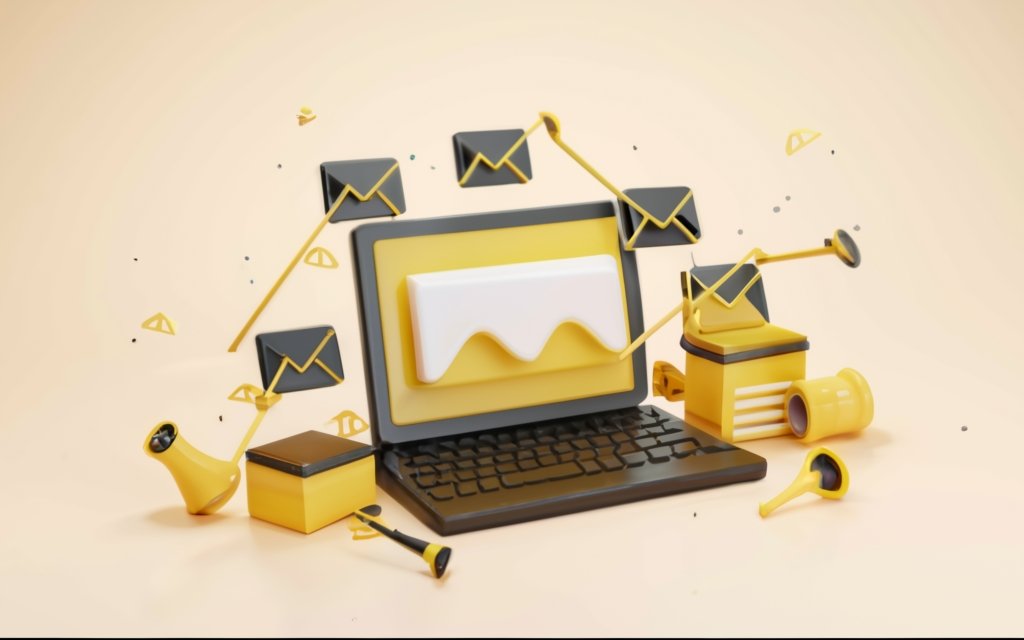I am sure that you have heard that cold outreach is dead. The good news is that it’s not. However, cold outreach as we have known it in the past is.
I am also sure that you have heard that the best way to reach out to potential customers is through inbound marketing. That is also not true.
Inbound marketing is a great way to reach out to potential customers, but it’s not the only way.
The truth is that cold outreach is alive and well, but it has to be done differently. In this article, I am going to go over how to do cold email outreach in 2024.
1. Get the right tools for the job
Cold email is a great way to get your business in front of potential customers. But, it’s also a lot of work. You need to find leads, build and manage your email list, write and send your emails, track your results, and more.
The good news is that there are a ton of tools out there to help you with every aspect of your cold email outreach campaign. From prospecting tools to email list building and management software to email tracking and analytics, you can find the right tool for every job.
Using the right tools will help you save time, stay organized, and get better results. And, it will make the whole process a lot easier and more efficient.
2. Research your prospects
The more you know about your prospects, the better you can tailor your outreach.
Before you start writing your emails, spend some time researching your prospects. Look at their company website, LinkedIn profile, and any other online content they’ve created. This will give you a good sense of their role, interests, and pain points.
You can also use this information to personalize your emails and sales proposals and make them more relevant to your prospects. For example, if you know that a prospect recently published a blog post about a specific topic, you can mention it in your email.
Taking the time to research your prospects will help you stand out from the competition and increase your chances of getting a response.
3. Find the right person to contact
If you can, find the person you want to contact directly. This can be a little tricky, but there are a couple of ways to go about it.
First, you can try using a tool like Hunter to find email addresses for specific people at a company. If you know the name of the person you want to contact, you can enter it along with the company’s domain to see if you can find their email address.
If that doesn’t work, you can also try using LinkedIn. Most people list their work email addresses on their LinkedIn profiles, so you can use the platform to find the person you want to contact and then get their email address.
If you can’t find the person you want to contact directly, you can use a tool like Hunter or Snov.io to find the email address of someone at the company and then use an email-finding tool like Name2Email to guess the email address of the person you want to contact. Don’t forget to verify that the email is valid.
If all else fails, you can try reaching out to the company on social media or via phone to see if you can get the email address of the person you want to contact.
The tass can be tedious and time-consuming. For that reason, you can think about using the services of virtual assistant companies to do the prospecting for you.
4. Choose the right email address
The next step is to find the right email address to send your pitch to.
You can use a tool like Hunter to look up email addresses for people at a specific company. Just enter the company’s name and Hunter will show you a list of email addresses associated with that company.
You can also use LinkedIn to find the right person to contact at a company. Just search for the company and look for people who work there. Once you find the right person, you can use Hunter to look up their email address.
5. Write a compelling subject line
The subject line is the most important part of your email, so don’t rush it. You need to grab the recipient’s attention and make them want to open your email.
Subject lines that are interesting, relevant, and personalized tend to perform better. And, of course, you should make sure to avoid any spam triggers.
You can test your subject lines to see which ones get the best open rates. But, if you’re not sure where to start, here are a few examples of great subject lines:
• “Quick question about [topic]”
• “Can we chat?”
• “Would love your feedback on [topic]”
• “Checking in on [topic]”
• “Intro to [your name]”
6. Write a personalized email
No one likes to be treated as a number. That’s why it’s so important to personalize your cold emails.
The first thing you should do is to use the recipient’s name in the email. It sounds simple, but it’s surprising how many people fail to do this.
You can also personalize the email by mentioning the recipient’s company, their job title, or anything else you can find out about them from their website, LinkedIn profile, or other online sources.
If you’re reaching out to a prospect, you can use a tool like LinkedIn Sales Navigator to find commonalities between you and your prospect. Then, you can mention these commonalities in your email to build rapport.
The more you can personalize your email, the better. Prospects are much more likely to respond to an email that feels like it was written just for them. You can use ChatGPT prompts for email writing to ensure that your emails deliver the right message, every time.
7. Keep it short and sweet
The most important thing to remember about cold emails is that they should be short. You only have a few seconds to grab your prospect’s attention, so get to the point quickly.
Keep your email to five sentences or fewer. If you need to include more information, use bullet points to break up the text and make it easier to read.
8. Provide value
The most important thing in a cold email is to provide value to the person you’re reaching out to. That value can come in many forms, but it should be the first thing you think about when you sit down to write your email.
Are you offering them a solution to a problem they have? Are you sharing some valuable information with them? Are you making them an offer they can’t refuse?
If you’re not providing value, then you’re just taking up their time. And that’s a surefire way to end up in the spam folder.
9. Include a call to action
Every email you send should have a purpose.
That purpose should be to get your recipient to take a specific action, whether that’s to book a meeting with you, try your product, or refer you to someone else in their network.
Don’t leave your recipient guessing what the next steps are. Be clear and direct about what you want them to do. This is called a call to action, and it should be the most prominent part of your email.
Pro tip: If you want your recipient to take more than one action, you can include multiple calls to action in your email. Just make sure they’re all clearly labeled and easy to find.
10. Follow up
If you don’t get a response to your email, don’t just assume they’re not interested.
You should always follow up at least once. People are busy, and they might have just missed your email.
Following up can also help you get a response. Sometimes, people just need a little nudge to get back to you.
If you do get a response, make sure to reply to it and keep the conversation going.
11. Test and optimize
Finally, you should always be testing and optimizing your email campaigns. This means trying out different subject lines, email copy, and calls to action to see what works best. You can also test different outreach strategies and segment your email lists to see what gets the best results.
Testing and optimizing your email campaigns can help you improve your open and response rates, which will ultimately lead to more sales. Plus, it can help you get a better understanding of your target audience and what they respond to, which you can use to improve other aspects of your marketing strategy. For enhanced results, consider using a Wix affiliate app to streamline your email marketing efforts and gain valuable insights.
12. Automate your process
It’s no secret that automating your sales process can save you a lot of time.
Email outreach is no different.
By using a cold email tool, you can automate the process of finding leads, personalizing your emails, and sending them out.
This can save you hours of time each week, allowing you to focus on other important tasks.
13. Avoid common cold email mistakes
Cold email outreach is a great way to get your business in front of potential leads. But, if you’re not careful, it’s also a great way to get your email address blacklisted.
Avoid these common cold email mistakes:
• Not including an unsubscribe link. You must give recipients a way to opt out of future messages. If you don’t, you’re breaking the law.
• Failing to do your research. Sending a generic email to a list of potential leads is not an effective strategy. You need to do your research and tailor your message to each recipient.
• Using spammy language. Phrases like “once in a lifetime opportunity” and “limited time offer” will send your emails straight to the spam folder. Stick to clear, concise language.
• Sending attachments. Many people are wary of opening attachments from people they don’t know. Instead, include a link to your website or a landing page where recipients can learn more.
• Not following up. If you don’t hear back from a potential lead, don’t assume they’re not interested. Follow up with a second email.
Final thoughts
Email is a powerful and effective sales and marketing tool. But as with any strategy, it requires a thoughtful and strategic approach to be successful.
By following the cold email tips outlined in this article, you can ensure that your outreach campaigns are well-received and effective. And, you can start generating high-quality leads and customers for your business.
Cold email outreach takes a lot of time and effort. Writing emails, tracking responses, and following up can feel overwhelming. Hiring a virtual assistant can help. They can handle routine tasks, keep follow-ups steady, and ensure quick responses. This lets you focus on core activities while increasing outreach efficiency.
So, get out there and start sending some emails! With the right approach, you’ll be amazed at what you can achieve.
Conclusion
To sum up, cold email outreach is a powerful strategy if you know how to do it right.
We hope the tips we shared with you will help you get started with cold email outreach and reach your target audience.
If you are looking to save time on your outreach, we can help you with that! Our email builder will help you create emails 5x faster.
What are your best tips for cold email outreach? Let us know in the comments below!




